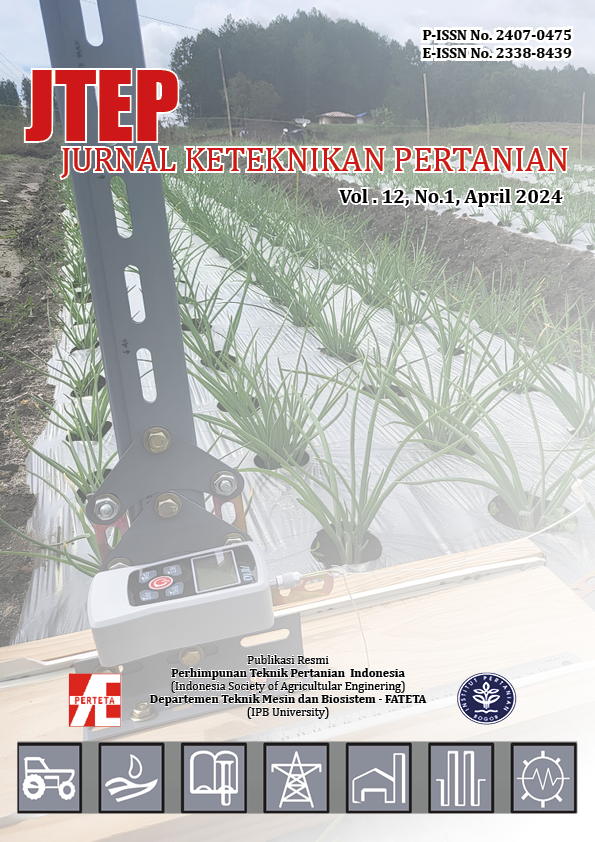Non-Destructive Prediction of Chemical Content in Palm Oil Fruit Using Near-Infrared Spectroscopy and Artificial Neural Network
Abstract
Oil and water content are an important quality criteria of crude palm oil (CPO) resulted from palm oil fruit processing. Those contents are usually determined using chemical method in the laboratory. This method is time consuming, long procedure, and destructive. Some efforts had been carried out to determine oil and water content of palm oil fruit non-destructively using some methods including Near-Infrared Spectroscopy (NIRS), but the results had not been satisfied. This research aims to assess Artificial Neural Network (ANN) and NIRS method to predict oil and water content of palm oil fruit’s non-destructively. The samples were palm oil fruits with ten maturity levels harvested from plantation in Bogor. Sample’s reflectance was measured with spectrometer NIR-Flex 500 at wavelength of 1000-2500 nm. After that, oil and water content were determined using chemical method. Some pre-treatments of NIR spectra namely normalization, savitzky-golay first derivative, their combinations, and standard normal variate were applied. Multivariate analysis such as PLS were carried out and the results of Factor Component (FC) were input for ANN model. The result showed the best method to predict oil content was combination savitzky-golay first derivative and normalization pre-treatment using PLS-ANN with 20 FC (R2=0.99; SEC=0,58%, RPD = 29.89; CV = 2.47%). For water content, the best prediction was standard normal variate pre-treatment using PLS-ANN with 20 FC (R2=0.99; SEC=1,07%, RPD=20.68; CV=1,73%). The result shows that developed ANN and NIRS can predict oil and water content of palm oil fruit non-destructively.
Authors

This work is licensed under a Creative Commons Attribution-ShareAlike 4.0 International License.
Authors submitting manuscripts should understand and agree that copyright of manuscripts of the article shall be assigned/transferred to Jurnal Keteknikan Pertanian. This work is licensed under a Creative Commons Attribution-ShareAlike 4.0 International License (CC BY-SA) where Authors and Readers can copy and redistribute the material in any medium or format, as well as remix, transform, and build upon the material for any purpose, but they must give appropriate credit (cite to the article or content), provide a link to the license, and indicate if changes were made. If you remix, transform, or build upon the material, you must distribute your contributions under the same license as the original.

